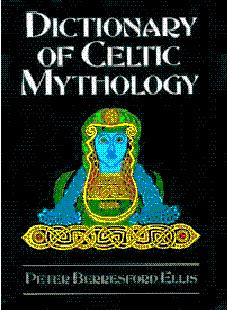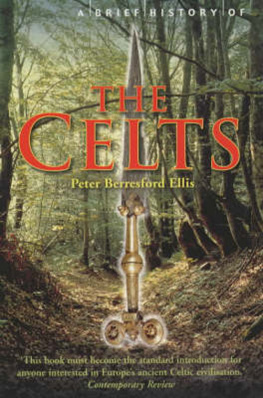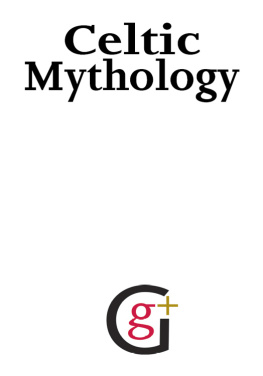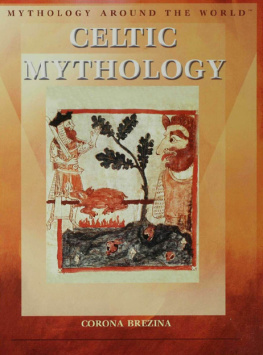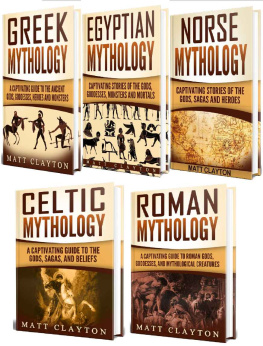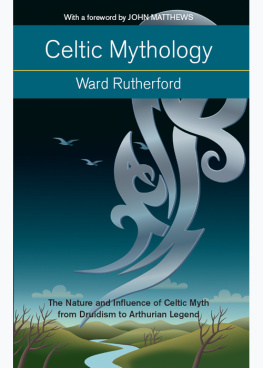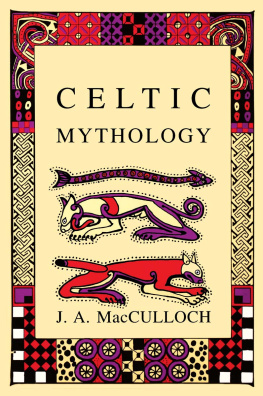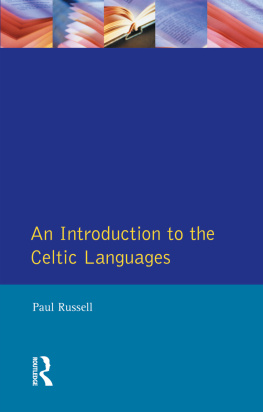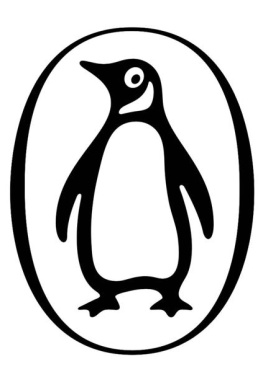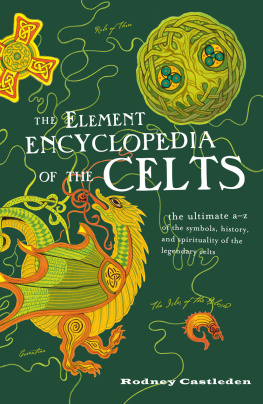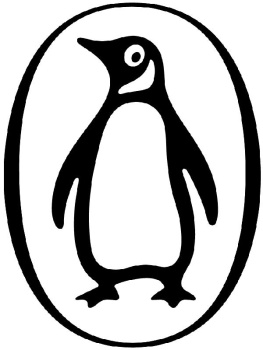enslaved. The name was given to them because they were made to carry bags of earth from the fertile valleys to the rocky hills during their enslavement. They came to Ireland in three groups, although all three took on the general name Firbolg. They play no spectacular part in the myths.
Fomorii
[I] The dwellers under the sea. A misshapen and violent people who are the evil gods of Irish myth and whose centre appears to be Tory Island. They reached Ireland about the same time as Partholn and battled with him, the Nemedians, and the Tuatha D Danaan. Sometimes they succeed in their battles and sometimes they fail. They often appear with only a single hand, foot, or eye. Their power was eventually broken for all time at the second battle of Magh Tuireadh.
Fosterage
An important feature of Celtic society that lasted in Scotland until the eighteenth century. Boys entered fosterage at the age of seven, when they were sent to the household of a distinguished druid, chieftain, or, later, Christian monk. Here they received their education. They would live and study with them until they reached the age of choice, which was seventeen for a boy but fourteen for a girl. During the period of fosterage they would be taught many subjectsmusic, literature, poetry, the art of warfare, the virtues of single combat, and the high value of honourand pursue such recreational pursuits as board games as well as team games. They were also taught to be efficient in the hunt. In Christian times they were taught Latin, Hebrew, and Greek in addition to their own languages. Fosterage as a concept occurs both in the Irish myths and the Welsh myths.
Fraoch
[I] The hero of the Tin B Fraoch. One of the most handsome warriors in Ireland. He fell in love with Findbhair, daughter of Ailill and Medb. While she returned this love, he could not persuade her to elope with him, nor could he pay the bridal price. Ailill and Medb plot his death and suggest he swim in a lake where a monster dwells. He does so. The monster eventually attacks him, but Findbhair comes to his rescue and they manage to kill the creature. Fraoch is wounded but is nursed by the gods and goddesses and Ailill and Medb are persuaded to consent to the wedding of their daughter.
There is a second part to the tale in which Findbhair and her three children and cattle herds are carried off and Fraoch sets out
after them in the company of Conall Cearnach. They overtake the kidnappers and rescue Fraochs family and possessions.
Freagarthach
[I] The Answerer. The sword of the sea god Manannn Mac Lir.
Friuch
[I] The swineherd of Ochall Ochne of Connacht, who is in perpetual rivalry with Nr, the swineherd of the Bodb Dearg of Munster. They fight through many reincarnations before being reborn as Finnbhenach, the White Horned Bull of Connacht, and Donn, the Brown Bull of Cuailgne.
Fuamnach
[I] The first wife of Midir the Proud who grew jealous when he took tain Echraidhe as his second wife. She turned her into a pool, then a worm, and finally a fly in order to part her from Midir. Then she raised a tempest that blew the fly/tain away from Midirs palace. Aonghus g slew her and took her head to his palace at Bruigh na Boinne as a trophy.
G
Gabalgline
[I] The ancient blind seer of Clan Dedad who was consulted by Ailill and Medb about the prophecy connected with the debility of the men of Ulster.
Gabhra, Battle of
[I] Anglicised as Gowra. The last great battle in which the Fianna took part and in which they were exterminated. Said to be fought on the site of Garristown, Co. Dublin, the battle is full of melancholy grandeur and a fitting end to the Fenian Cycle. The High King Cairbre, trying to curb the power of the Fianna following the death of Fionn Mac Cumhail, provokes the conflict. The hero, Oscar, commands the Fianna and slays Cairbre, but is himself mortally wounded. Fionn himself returns from the Other-world to mourn his grandson, while Oisn and Celta carry Oscars body from the field on a bier.
Gae-Bolg
[I] Cchulainns famous belly spear, which was given him by the female champion Scthach, who taught him the martial arts. It made one wound when entering and opened into thirty barbs once in the body.
Gael
[I] See .
Gaiar
[I] A son of Manannn Mac Lir who had an affair with Bcuma, which caused her expulsion from Tr Tairnigiri, the Land of Promise.
Galahad
[W] Originally Gwalchafed, Falcon of Summer. He became famous in the medieval versions of the Arthurian sagas as the only knight to find the Holy Grail. See .
Galan Mai
[W] Equivalent of Beltaine, Welsh spring festival on May 1.
Galatia
The first Celtic state about which we have evidence of how it was governed. Galatia, an area in central Turkey, was settled by the Celts in ca. 275 b.c. There were three main tribal groups, the Tolistoboii, the Tectosages, and the Trocmi. The Tolistoboii settled
the upper valley of Sangarios (Sakarya), in which the famous city of Gordium (now Polatli) stood; the Tectosages settled around Tavium and eastwards. The Trocmi settled along the banks of the River Halys (Kizirmak), with Ancyra (Ankara) as their chief settlement. Strabo records that each tribe had four septs, making twelve septs altogether, all of whom sent a total of 300 elected representatives to an assembly at Drunemeton. Elsewhere it is recorded that Pessinus was their chief city, in the territory of the Tolistoboii, so perhaps this was the same as Drunemeton (the sanctuary of oaks). The Galatian Celts issued their own coinage. Galatia remained independent for 250 years until on the defeat of Deiotaros II, the last king, Galatia became a Roman province (25 b.c. ). Paul of Tarsus made Galatia famous in Christian terms by visiting the land of the Tolistoboii and staying in Pessinus between a.d. 40 and 50. He later wrote his famous Epistle to Galatians. St. Jerome, staying in Ancyra (Ankara) in the early fifth century, reported that the Galatians still spoke a Celtic language that was similar to that spoken in Gaul, with which he was familiar. At what period the Celtic language of Galatia, its culture, customs, and historical traditions ceased to exist is difficult to estimate. The language was probably dead by the eighth century, when the earliest records of modern Turkish are to be found. There seems, within Turkish culture and the surrounding Greek culture, to be little trace of the seven centuries of Celtic occupation in the area.
Galicia
Northwest Spain. During the fifth and sixth centuries a.d. , as the Anglo-Saxons began to push into Britain to carve England out of the former Celtic territory, British tribes began to migrate. The major migrations were to the Armorican peninsulaBrittany. Others settled in Celtic pockets elsewhere, such as Brittenberg on the Rhine, while more groups went to Ireland. Other tribal groups arrived on the northern seaboard of Spain, in Galicia and Asturias, settling among a Latin-speaking population.
The settlers were recognised at the Council of Lugo in a.d. 567 as constituting the Christian episcopal See of Bretoa, whose bishop, Mahiloc, signed the acta of the Second Council of Braga in a.d. 572. The settlers have a Celtic name for the areaGaliciaargued to be the same root as Galatia. But these Brythonic Celticspeaking settlements in Galicia and Asturias were quickly absorbed
Next page
